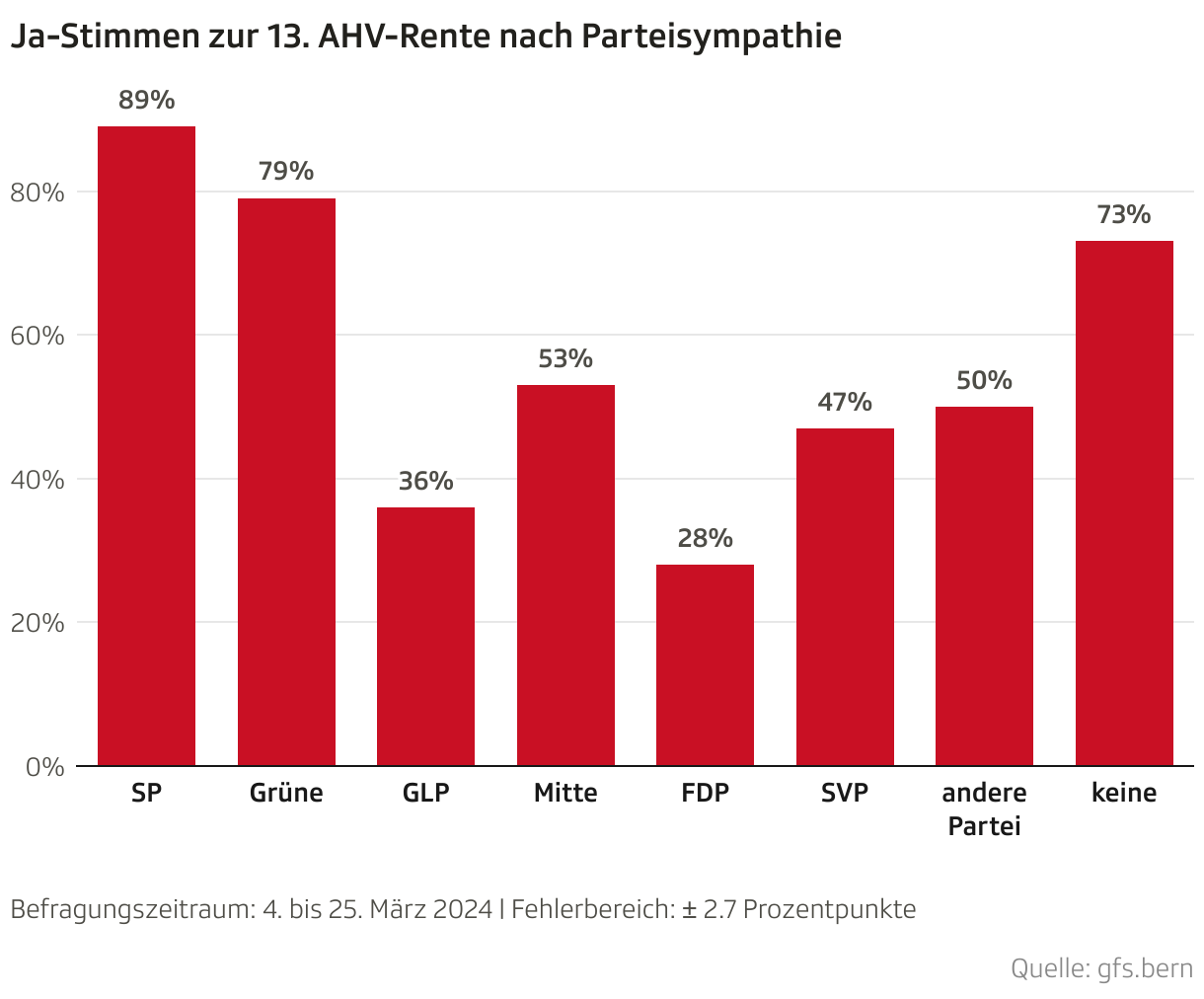Contents
The review of the vote on March 3rd shows: the votes of those over 60 years old ensured the historic yes.
The vote at the beginning of March caused a political earthquake: the AHV is being expanded for the first time in 45 years. Afterwards there was often talk of a generation gap that had opened up.
The follow-up analysis from the GFS Bern research institute is now available – and confirms: It was primarily the older generations who made the 13th AHV pension a success.
Different mobilization of young and old
The voter turnout was above average at 58 percent. A well-known, but particularly important element in this proposal also emerged: older people went to the polls in significantly larger numbers than younger people. At 81 percent, the majority of men and women over 65 years of age voted. Among the youngest voters (18 to 39 years old) this figure was 43 percent.
13. AHV pension
Federal template: Popular initiative “For a better life in old age (initiative for a 13th AHV pension)”
YES
1,883,465
VoicesNO
1,350,257
Voices
Class votes
Interesting: If you divide this group again into those under 30 and those over, the value does not change. It was only from the age of 40 that higher mobilization began.
Over 60 clearly said yes…
Age was also an important indicator when it came to vocal behavior. In the 18 to 39 age group, a majority voted against the 13th AHV pension – albeit narrowly (shares between 46 and 47 percent).
The situation was different for older voters – and especially for those age groups whose retirement was only a few years ago or is imminent. 75 percent of 60 to 69 year olds voted for the issue.
The so-called Vox analysis states: “It is striking that the vast majority of those between the ages of 60 and 69 voted yes, while those aged 70 and older voted similarly as often as those aged 50 to 59 (with a yes share of around 59 percent).”
… SP voters did it in droves
When it came to party sympathy, there were clear figures, especially on the left: 89 percent of those who sympathized with the SP said yes; for the Greens the figure was 79 percent. The center-right, however, was more divided. This is particularly clear with the SVP: less than half of the voters followed the party slogan and voted no (47 percent).
When it comes to socio-demographic factors, only income provided an indication of the vote, regardless of party sympathy. The lower the household income, the higher the yes share was.
Social concerns about one’s own well-being
According to the experts from GFS Bern, the motives for a yes vote were primarily social considerations: including a perceived urgency in view of increased costs and the idea of solidarity. Only a minority stated that they had voted for the 13th AHV pension for personal reasons – whether for themselves or acquaintances.
As far as the response to the voting arguments is concerned, inflation was at the top. Almost all those who voted yes agreed with the supporters’ argument that the financial situation of pensioners must improve (95 percent).

Legend:
The Yes Committee’s arguments prevailed with a majority of the voting population (Image: 09.01.24)
KEYSTONE/Anthony Anex
A majority of those voting no (55 percent) also agreed with this argument. However, the argument that women should be given more support because of their pension gap was polarizing. It received widespread support on the yes side – 74 percent agreed with the statement. However, in the no camp, a majority did not agree with this argument (52 percent).


